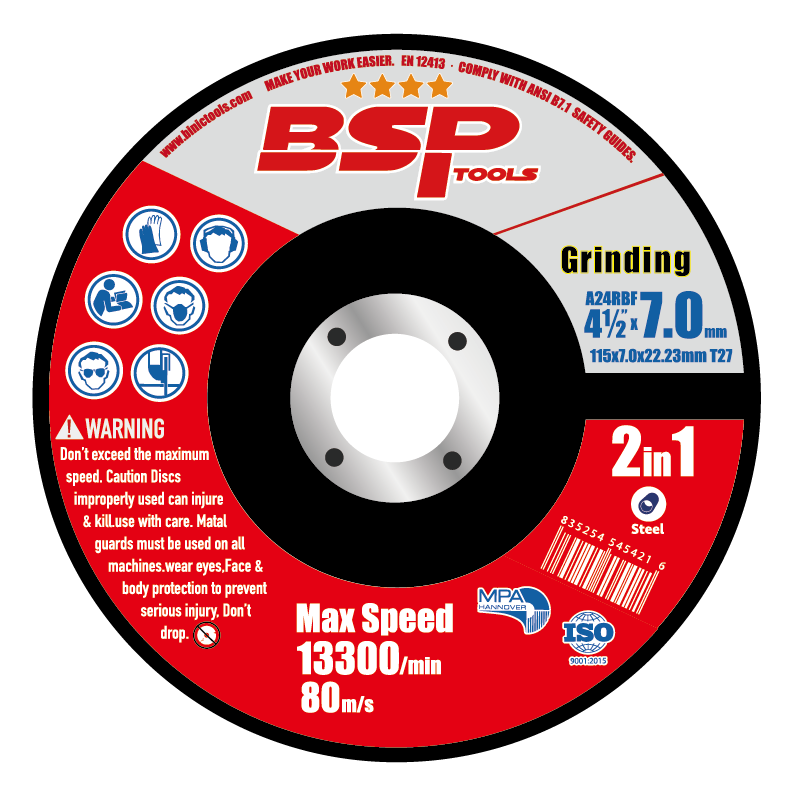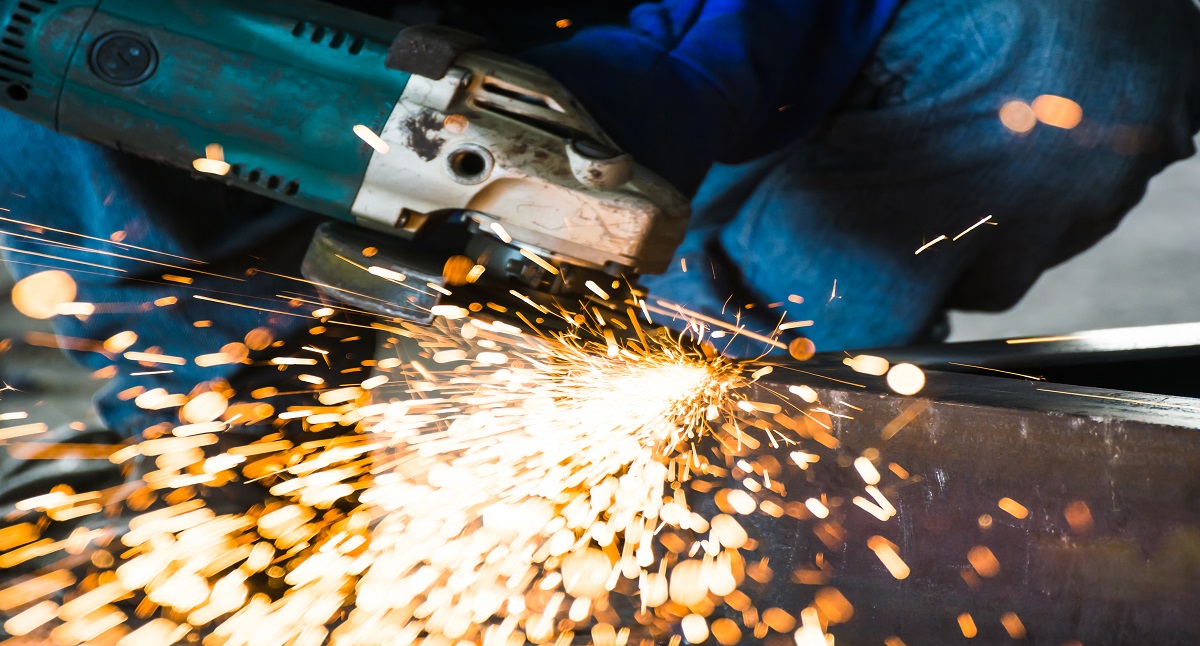Grinding wheels are essential tools in various industries, including metalworking, woodworking, and construction. Among the many types of grinding wheels available, the Type 27 grinding wheel stands out for its unique design and versatility. This article will explore what Type 27 grinding wheels are, their characteristics, and their applications in different fields.
What are Type 27 Grinding Wheels?
Type 27 grinding wheels, also known as depressed center wheels or flat wheels, are specifically designed for grinding, cutting, and finishing metals and other materials. The wheel features a recessed center, which allows it to be used at a more comfortable angle while minimizing the risk of binding or snagging during operation. The standard dimensions for Type 27 wheels typically range from 4 to 16 inches in diameter, with varying thicknesses, making them suitable for a wide array of tasks.
Design Characteristics
- Depressed Center: The most distinguishing feature of Type 27 wheels is their depressed center design, which allows for better access to the workpiece, especially in tight spaces.
- Material Composition: Type 27 wheels are made from a variety of materials, including aluminum oxide, silicon carbide, and ceramic. The choice of material affects the wheel’s performance, durability, and suitability for specific applications.
- Grain Structure: The grain structure of a Type 27 grinding wheel is crucial for its cutting ability. The wheel can have a coarse or fine grain, depending on the desired finish and the material being worked on.
- Bonding Agent: The bonding agent used to hold the abrasive grains together affects the wheel’s strength and lifespan. Common bonding agents include resin, vitrified, and rubber.
- Grit Size: The grit size of a Type 27 wheel determines its aggressiveness and finish quality. Coarse grits (e.g., 24-60) are suitable for fast material removal, while finer grits (e.g., 80-120) are used for polishing and finishing.
Common Applications of Type 27 Grinding Wheels
Type 27 grinding wheels are versatile and widely used in various applications. Here are some of the most common uses:
1. Metal Fabrication
In metal fabrication, Type 27 grinding wheels are invaluable for preparing surfaces, removing imperfections, and achieving desired finishes. They are commonly used for:
- Deburring: After cutting or machining metal parts, burrs and sharp edges can remain. Type 27 wheels effectively remove these unwanted edges, enhancing safety and aesthetics.
- Surface Preparation: Before welding or painting, surfaces often need to be prepared by grinding off rust, scale, or old paint. Type 27 wheels help achieve a clean surface, promoting better adhesion for coatings.
- Grinding Welds: Type 27 wheels are used to grind down welds for a smooth finish. They can be employed on both stainless steel and mild steel to blend welds seamlessly with the base material.
2. Metal Removal
Type 27 grinding wheels excel in metal removal applications, making them suitable for:
- Shaping and Sizing: These wheels can be used to shape and size metal parts by removing excess material. This is crucial in industries such as automotive and aerospace, where precision is vital.
- Sharpening Tools: Type 27 wheels can sharpen various tools, including chisels, blades, and drill bits. The ability to quickly grind and restore the cutting edge is invaluable in maintaining tool performance.
3. Woodworking
Although primarily associated with metalworking, Type 27 grinding wheels are also used in woodworking applications. They can be employed for:
- Finishing: Woodworkers use Type 27 wheels to achieve a smooth finish on wooden surfaces. The wheels can effectively remove rough spots and prepare the wood for staining or varnishing.
- Removing Paint or Coating: When refinishing wooden furniture or structures, Type 27 wheels can strip old paint or coatings, allowing for a fresh start.
4. Construction
In construction, Type 27 grinding wheels play a critical role in various tasks, including:
- Masonry Work: These wheels can grind and cut masonry materials, such as concrete, brick, and stone. They are often used for creating clean edges or fitting materials together seamlessly.
- Surface Grinding: Type 27 wheels can be used to grind concrete surfaces to remove imperfections or prepare for coatings. This is particularly important in creating smooth, level surfaces for flooring or driveways.
Safety Considerations When Using Type 27 Grinding Wheels
While Type 27 grinding wheels are effective tools, safety should always be a priority when using them. Here are some safety tips to keep in mind:
- Personal Protective Equipment (PPE): Always wear appropriate PPE, including safety glasses, gloves, and hearing protection, to shield against debris and noise.
- Inspect the Wheel: Before use, inspect the grinding wheel for any signs of damage or wear. Do not use a wheel that is cracked or chipped, as this can lead to breakage during operation.
- Proper Mounting: Ensure that the wheel is mounted securely on the grinder and that the grinder is turned off while changing wheels. Follow the manufacturer’s instructions for mounting and using the wheel.
- Avoid Overheating: Prolonged grinding can cause the wheel to overheat, leading to a reduced lifespan and possible failure. Take breaks to allow the wheel to cool down.
- Use the Correct Speed: Ensure that the grinding wheel is rated for the speed of the grinder. Using a wheel at an incorrect speed can result in excessive wear or catastrophic failure.
- Workpiece Stability: Ensure the workpiece is securely clamped or held in place to prevent movement during grinding, which can lead to accidents.
Choosing the Right Type 27 Grinding Wheel
Selecting the right Type 27 grinding wheel depends on several factors, including the material being worked on, the desired finish, and the specific application. Here are some tips for choosing the appropriate wheel:
- Material Compatibility: Choose a wheel designed for the specific material you are working with. For example, use aluminum oxide wheels for steel and silicon carbide wheels for non-ferrous metals.
- Grit Size: Select the grit size based on the level of material removal and finish required. Coarse grits are ideal for heavy material removal, while finer grits are suitable for finishing applications.
- Thickness: Consider the thickness of the wheel for your application. Thicker wheels provide more durability and are suited for heavy grinding tasks, while thinner wheels are better for precision work.
- Speed Rating: Always check the speed rating of the wheel and ensure it matches or exceeds the RPM of your grinder.
Conclusion
Type 27 grinding wheels are versatile tools widely used in metalworking, woodworking, and construction. Their unique depressed center design allows for comfortable operation and accessibility, making them suitable for various applications, including deburring, surface preparation, and tool sharpening. While these wheels are highly effective, safety should always be a priority when using them. By understanding their characteristics, applications, and proper usage, users can maximize the benefits of Type 27 grinding wheels in their projects. Whether you are a professional tradesperson or a DIY enthusiast, mastering the use of Type 27 grinding wheels can enhance your work efficiency and quality.


